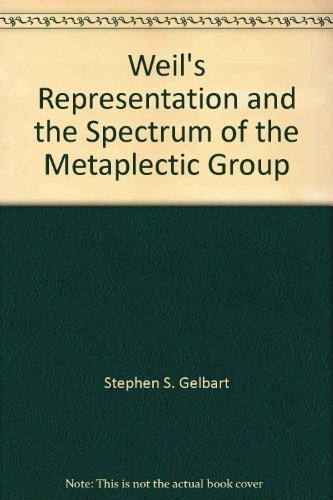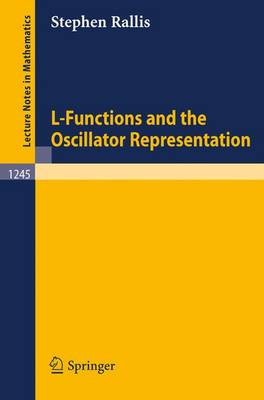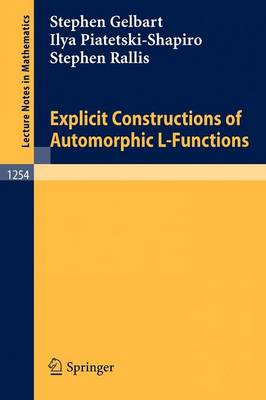Lecture Notes in Mathematics
3 primary works
Book 530
Weil's Representation and the Spectrum of the Metaplectic Group
by Stephen S. Gelbart
Published 1 October 1976
Book 1245
These notes are concerned with showing the relation between L-functions of classical groups (*F1 in particular) and *F2 functions arising from the oscillator representation of the dual reductive pair *F1 *F3 O(Q). The problem of measuring the nonvanishing of a *F2 correspondence by computing the Petersson inner product of a *F2 lift from *F1 to O(Q) is considered. This product can be expressed as the special value of an L-function (associated to the standard representation of the L-group of *F1) times a finite number of local Euler factors (measuring whether a given local representation occurs in a given oscillator representation). The key ideas used in proving this are (i) new Rankin integral representations of standard L-functions, (ii) see-saw dual reductive pairs and (iii) Siegel-Weil formula. The book addresses readers who specialize in the theory of automorphic forms and L-functions and the representation theory of Lie groups. N
Book 1254
Explicit Constructions of Automorphic L-Functions
by Stephen S. Gelbart, Ilya Piatetski-Shapiro, and Stephen Rallis
Published 6 May 1987
The goal of this research monograph is to derive the analytic continuation and functional equation of the L-functions attached by R.P. Langlands to automorphic representations of reductive algebraic groups. The first part of the book (by Piatetski-Shapiro and Rallis) deals with L-functions for the simple classical groups; the second part (by Gelbart and Piatetski-Shapiro) deals with non-simple groups of the form G GL(n), with G a quasi-split reductive group of split rank n. The method of proof is to construct certain explicit zeta-integrals of Rankin-Selberg type which interpolate the relevant Langlands L-functions and can be analyzed via the theory of Eisenstein series and intertwining operators. This is the first time such an approach has been applied to such general classes of groups. The flavor of the local theory is decidedly representation theoretic, and the work should be of interest to researchers in group representation theory as well as number theory.


